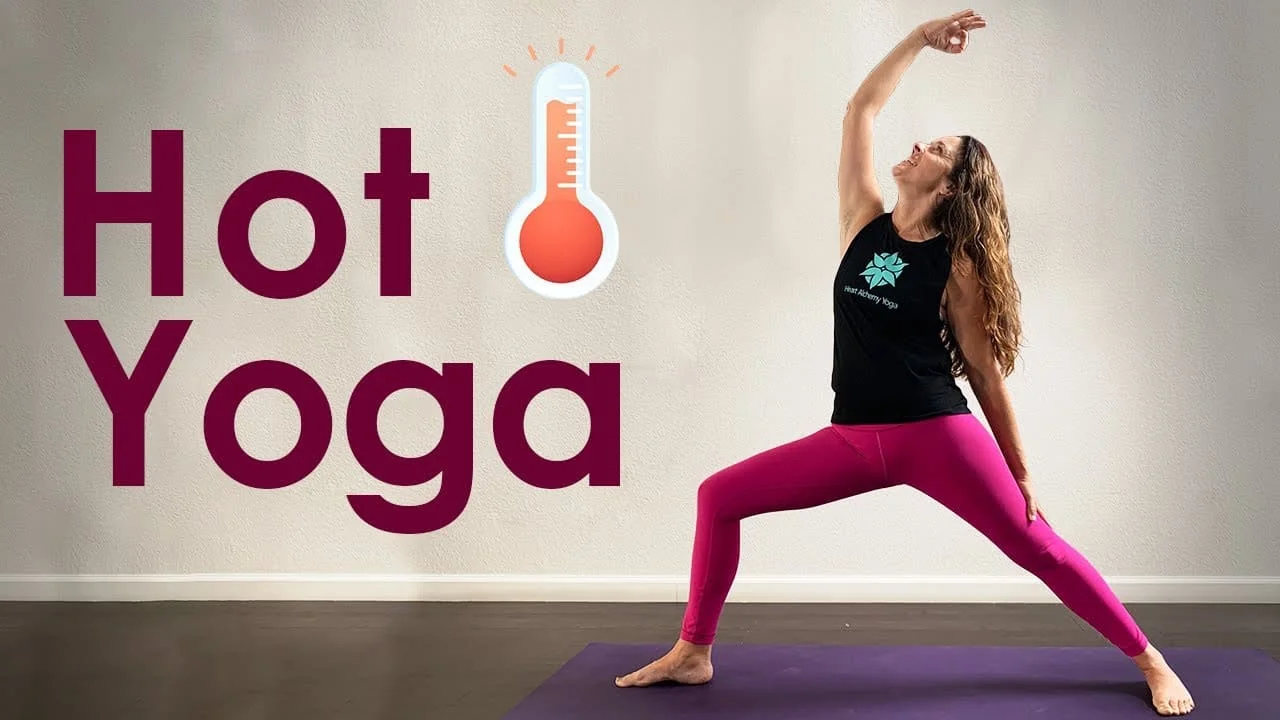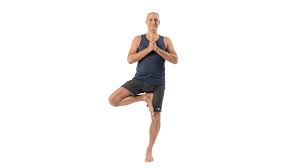8 Benefits Of Hot Yoga
Table of Contents
Introduction
- In recent years, hot yoga has gained popularity as an activity.
- Many of the advantages of traditional yoga are also present in this form, including stress relief, increased strength, and flexibility.
- However, hot yoga may provide your heart, lungs, and muscles with an even more powerful, intense exercise when the heat is dialed up.
- Would you like more information about the health benefits of hot yoga?
- This post will examine the benefits of this intense workout in more detail, along with how to get started.
- You’ve probably heard of hot yoga, whether it was from people you saw on your way to work or because your buddies told you about it at brunch.
- Over the years, the practice has become more and more popular, drawing large crowds of individuals for their weekly sweat sessions.
- While the many health benefits of conventional yoga are well established, are there any benefits to raising the temperature?
- Numerous individuals have this belief, and scientific evidence supports it.
- Hot yoga helps you decompress while providing intensive exercise and building strength and flexibility in a setting akin to a sauna.
- Through a series of positions, yoga connects your breath to your movement, calms your mind, and enhances your breathing.
- Certain yoga courses provide a heated studio setting for an even more rigorous practice.
- In a heated chamber, which simulates a sauna, you may relax and de-stress while bringing your attention back to the here and now.
- As with non-heated yoga, the heat challenges your heart and lungs while also helping you build strength and flexibility.
- Bikram Yoga versus Hot Yoga
- Although hot yoga and Bikram yoga are sometimes used interchangeably, this isn’t totally true.
- Bikram yoga is a kind of yoga where students practice 26 postures repeatedly throughout the course of a 90-minute or shorter class.
- The temperature in the chamber is 105 degrees Fahrenheit (40 degrees Celsius), and courses are usually quieter with no singing or chanting.
- The phrase “hot yoga” refers more broadly to any temperature between 80 and 100 degrees Fahrenheit (26 and 38 degrees Celsius) in the yoga studio.
- Additionally, depending on the school and instructor, it may involve various positions.
- Not like Bikram, hot yoga frequently incorporates music.
- Hot yoga’s intense heat not only increases difficulty but also has positive effects on both physical and emotional well-being.
- My upbringing was surrounded by a strong belief in the benefits of yoga.
- My mum started teaching hot yoga at our neighborhood studio when she was 14 years old, having just finished her training as a yoga instructor.
- I only recently started going to hot yoga classes on a regular basis in my area, and I was surprised by how challenging they were, as well as how much more flexible and peaceful they made me feel.
- Are you interested in giving hot yoga a try but not sure if it’s right for you?
- I conducted interviews with professionals in the field of yoga and certified teachers who had a minimum of 300 hours of training and years of experience to learn about the health advantages of hot yoga, who should try it, and how to begin safely.
What is Hot Yoga?
- Although the phrases “hot yoga” and “Bikram yoga” are sometimes used together, they are not exactly the same.
- He, a yogi, created the Bikram yoga technique, which is practiced in a room that is 105°F (41°C) and 40% humid.
- There are two breathing exercises and twenty-six postures, which are performed in the same order in each session.
- 90 minutes is how long a regular Bikram yoga class lasts.
- Conversely, hot yoga basically refers to the space being heated above room temperature.
- The temperature can be adjusted to the yoga instructor’s preference, however, it is usually set between 27 and 38°C (80 and 100°F).
- Hot yoga classes are open to any kind of position, and each studio will have a different class time.
- Additionally, hot yoga frequently incorporates music and more student interaction than Bikram yoga, which is a more contemplative and silent kind of yoga.
- Because of accusations of violence against its creator, Bikram yoga has lost some of its adherents in recent years.
- Instead of referring to their heated programs as “Bikram yoga,” some establishments may call them “hot yoga.”
- Therefore, before enrolling, it’s a good idea to thoroughly read the class descriptions.
What are the benefits of Hot Yoga?
- Both Bikram and hot yoga seek to promote mental and physical well-being, regardless of the temperature of the room.
- Although practicing yoga in a warm setting can be more difficult, there are several advantages that can make it worthwhile, particularly if you want to improve in one of the areas listed below.
- Hot yoga, when performed properly and safely, can offer the following advantages:
Improves flexibility
- It’s probably common knowledge that stretching during a warm-up is safer than stretching during a frigid one.
- Thus, it stands to reason that practicing yoga in a heated studio might facilitate and enhance certain positions.
- You can extend your range of motion and stretch a bit farther thanks to the heat.
- A 2013 study on Bikram Yoga found that after 8 weeks, the lower back, shoulders, and hamstrings of yoga practitioners were more flexible than those of the control group.
Burns more calories
- With conventional yoga, a 160-pound individual may burn around 183 calories in an hour.
- You may burn even more calories by increasing the temperature.
- A 90-minute Bikram yoga practice can burn as many calories as 460 for men and 330 for women, according to Colorado State University experts.
- Though not nearly as intense as a Bikram session, hot yoga nevertheless increases caloric expenditure above standard yoga.
Builds bone density
- During a yoga position, supporting your weight might assist in increasing bone density.
- Given that bone density decreases with age, this is particularly crucial for premenopausal women and elderly individuals.
- After five years of Bikram yoga practice, women’s neck, hips, and lower back bone density increased.
- This gave the study’s authors reason to think that Bikram yoga would be a useful tool for lowering women’s osteoporosis risk.
Reduces stress
- Yoga is a popular natural stress-reduction method.
- In a 2018 investigation yoga was determined to be a major stress-reduction program for participants after 16 weeks, according to a of physically inactive and stressed individuals.
- Simultaneously, it enhanced their self-efficacy (the conviction that one can influence one’s behavior and social surroundings) and health-related quality of life.
Eases depression
- Yoga is a well-known method for promoting relaxation and elevating your mood.
- In addition, a 2017 review of 23 separate research that examined yoga’s potential benefits as a depression treatment concluded that the practice can effectively lessen depression symptoms.
Provides a cardiovascular boost
- Your heart, lungs, and muscles will be put through a more strenuous exercise as you perform different yoga postures in extreme heat as opposed to lower temperatures.
- A 2014 research found that you can raise your heart rate to match the intensity of a brisk walk (3.5 miles per hour) with only one hot yoga session.
- Your metabolism and breathing rate are also increased by hot yoga.
Reduces blood glucose levels
- While exercising of any kind can aid in burning calories and lowering blood glucose (sugar) levels, hot yoga may be particularly beneficial for those who are more susceptible to type 2 diabetes.
- In a 2013 investigation young, slim people showed less benefit from a short-term Bikram yoga program than older, obese adults, despite the latter group benefiting more from it.
Nourishes the skin
- One of hot yoga’s major goals is to make you sweat a lot.
- Sweating in a warm atmosphere has several advantages, including enhancing circulation and supplying skin cells with oxygen- and nutrient-rich blood.
- Thus, your skin may benefit from internal nutrient delivery.
Safety advice
- In general, hot yoga is safe if your health is sound.
- But there are a few safety measures to be aware of, just as with other forms of exercise.
- One big risk with hot yoga is dehydration.
- It’s essential to stay hydrated before, during, and after a hot yoga practice.
- You might be able to replenish electrolytes lost during your hot yoga practice by drinking a low-calorie sports drink.
- You may be more likely to faint in a hot environment if you have certain underlying medical issues.
- Heart disease, diabetes, vascular anomalies, anorexia nervosa, and a history of fainting are examples of this.
- Hot yoga may make you more susceptible to lightheadedness or dizziness if you have low blood pressure or blood sugar.
- To ensure that hot yoga is safe for you, speak with your doctor.
- Prior to attempting hot yoga, expectant mothers should speak with their doctor.
- If you’ve previously experienced issues with heat sensitivity, you might wish to continue practicing yoga at room temperature.
- If you experience nausea, dizziness, or lightheadedness, stop immediately.
- Get out of the room and find a cooler place to relax.
How to get started
- Whether you’ve never practiced yoga before, you might want to check out a standard class to determine whether the teacher and studio are a good fit for you.
- Ask about hot yoga sessions and whether there are any beginner-friendly options while you’re there.
- It can be a good idea to visit a few different yoga studios before deciding on one.
- To find out if the yoga studio is the appropriate match for you, find out if they offer free or reduced trial sessions.
- Put on breathable, lightweight clothing that can wick away perspiration.
- When you start perspiring, your yoga mat could become a little slick, so bring a towel to cover it.
- You may also carry an additional towel for your hands and face.
- Think about specialized socks and gloves that can improve your grip in a heated yoga room.
- You may drink cool water from your big, insulated water bottle during your heated yoga practice.
Who should try hot yoga?
- Everyone is welcome to attend hot yoga courses.
- Attempting novel types of physical activity may also be a fun way to include movement into your everyday routine.
- However, it’s advisable to consult your physician before attempting hot yoga.
- This is particularly important if:
- You are pregnant
- You are prone to dehydration
- You have a history of health conditions
- Do you have heat intolerance or a previous heat injury
Staying safe during hot yoga
- For most healthy persons, hot yoga is typically well tolerated.
- But, it’s crucial to understand how to exercise safely, just as with any other kind of exercise.
- Remain hydrated. You should drink a lot of water before, during, and after class because you will be perspiring a lot.
- Don’t eat a heavy lunch right before class.
- Exercise right after a large meal may irritate your stomach.
- Have a little snack one to two hours prior to class instead.
- Take it easy.
- It’s critical to keep in mind that practicing yoga is for both your body and yourself.
- Try not to compare yourself to others and just do what makes you comfortable.
- Take caution not to overextend yourself.
- Warmer weather may make you feel more pliable, but be cautious not to overextend yourself since you might be hurt.
- Introspection is important. If you feel dizzy, queasy, weak, or lightheaded, leave the room.
- Start with a standard yoga class.
- Fortunately, unheated yoga provides many of the same advantages if you’ve never done it or think it might not be for you.
What to expect during hot yoga
- Although hot yoga may be practiced differently in different studios, the following are basic expectations:
- Classes run between sixty and ninety minutes.
- The room’s temperature can fluctuate from 80 to 105°F, and its humidity level can also change.
- Hot yoga courses including vinyasa, Bikram, and yin are available.
- While some hot yoga courses have music, others don’t.
- Usually, the studio’s website provides this information in the class description.
- Wear spandex or other fabrics that wick away moisture.
- Additionally, aim to come to your first hot yoga session fifteen minutes early to set up.
- Remember to bring:
- A handkerchief to prevent perspiration from getting into your eyes
- a yoga mat, while some studios can charge a modest price for mats and towels
- a bottle of water to remain hydrated in class
- A headband or hair clip to hold your hair back while you work up a sweat
Conclusion
Anyone is a good fit for hot yoga. However, it could be just what you’re looking for if you like doing yoga every day and want to take it to the next level. There are several advantages to hot yoga for your body and mind. Y
ou may increase your cardiovascular fitness, burn calories, strengthen your bones, and increase your flexibility. It could also lessen stress and aid with depression. Before participating in a hot yoga class, see your doctor if you have any heart or artery problems, diabetes, anorexia nervosa, a history of fainting, or heat sensitivity.
FAQ
Benefits of Hot Yoga: Facts Supported by Science and Safety Advice
There are several advantages to hot yoga for your body and mind. You may increase your cardiovascular fitness, burn calories, strengthen your bones, and increase your flexibility. It could also lessen stress and aid with depression.
Your body might get more detoxified and even have better circulation thanks to the heat! Since the goal of traditional non-heated yoga courses is to prepare the muscles for the next activity, the pace is usually slower at first.
Hot yoga has additional hazards, such as electrolyte imbalances and elevated blood pressure, and is probably not something that should be done daily. Make sure you are cleared to participate in hot yoga sessions and limit your attendance to a few per week.
Hot yoga is practiced in a heated atmosphere, which raises heart rate and boosts caloric expenditure during the session, which typically lasts between 50 and 90 minutes. It expedites the breakdown and combustion of fat. Hot yoga helps people lose weight more quickly over time, which makes it a very efficient weight-loss technique.
For most people, it is advised to do hot yoga two or three times a week. Because of the high temperature in the room, hot yoga may be intense, so it’s crucial to pay attention to your body and not push yourself too hard.
References:
- GoodRx – Error. (n.d.). https://www.goodrx.com/well-being/movement-exercise/benefits-of-hot-yoga
- 9 Benefits of Hot Yoga for a Healthier Body and Mind. (n.d.). Nike.com. https://www.nike.com/a/benefits-of-hot-yoga
- Igo, C. (2022, February 13). Benefits of Hot Yoga: Is It Really Worth All That Sweat? CNET. https://www.cnet.com/health/fitness/benefits-of-hot-yoga/
- Roland, J. (2019, September 11). 8 Benefits of Sweating It Out with Hot Yoga. Healthline. https://www.healthline.com/health/hot-yoga-benefits#getting-started







